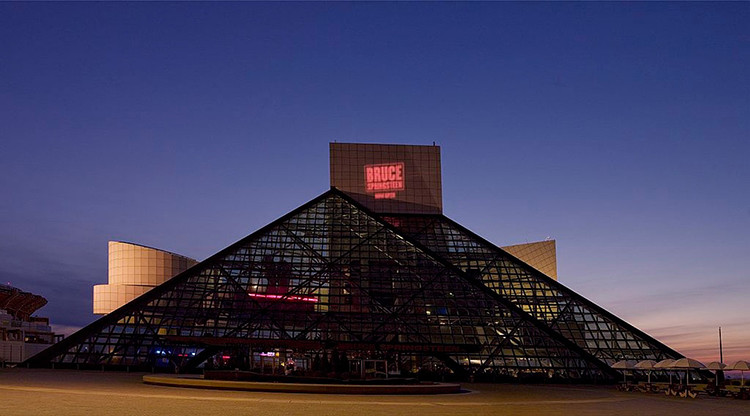This article originally appeared in The Florida Basement, the former Swamp Records Gainesville-based blog.
Recently Stereogum reported the addition of N.W.A, the rap group of Compton fame, into the Rock and Roll Hall of Fame, an institution as dated as its name suggests. No longer does the Hall receive grace from acts of just rock and roll, but is slowly metamorphosing into a general genre library. Additions such as Bob Marley in 1994, Miles Davis in 2006, or Madonna in 2008 are a few more egregious examples of artists to be included in a catalogue mostly dominated by aging, often unknown, and certainly significantly male “rock stars”. But the diversity of acts, however limited in scope it may be, does not suggest an outright aversion to newer or more prominent musicians — which it arguably should, being a Rock and Roll Hall of Fame — but rather a more sinister reality: the selection process is fueled by an acute awareness of the necessity for enhancing or restructuring the organization’s drained preeminence.
Stellar modern-day rock artists like Foo Fighters notwithstanding, the trend of inclusion is a natural evolution, but one that represents convenience more than a concerted effort at coping with the times. The organization has bills to pay, money to raise, tickets to sell. The inclusion of a recently highly publicized rap group like N.W.A is an opportunity too ripe to avoid capitalizing on, and seeing this unfold requires a bit of historical context.
The institution first incorporated and inducted a performer (Chuck Berry) in 1986. N.W.A’s Straight Outta Compton released in 1988. N.W.A shares their ascendancy with, in Stereogum’s words, “a pretty tepid class — Steve Miller, Chicago, Cheap Trick, Deep Purple…” some of whom N.W.A’s influence is arguably — sorry Steve — more significant. The only other artists falling firmly within the general framework of hiphop are Grandmaster Flash and the Furious Five, the Beastie Boys, Run-DMC, and Public Enemy. These artists alone are at least partial repudiation of the organization’s original mission, but acts such as ABBA, Michael Jackson, and even the Red Hot Chili Peppers cement the notion that success and popularity are the backseat drivers of induction. Rock and roll, meanwhile, resembles an ancient, crazed Immortan Joe (apparently I’m also desperate to strike Mad Max levels of cultural significance) at the wheel.
The most salient note is of course the almost complete absence of single performers outside rock and roll in the hall. The “Golden Age” of hiphop, featuring culturally significant and wildly popular figures such as LL Cool J, KRS-One, and a young Nas, is an era of music replete with artists (collaborative or otherwise) worthy of any Hall of Fame, just arriving into consideration almost thirty years — the only reasonable trend of the whole enterprise, I think — after its heyday. Clearly the Hall is willing to bend the rules to take advantage of the undercurrents of predominantly American and British society. When does it completely shirk its susceptibilities? If the trend continues, the next likely unusual candidates from the hemisphere of hiphop will be A Tribe Called Quest, De La Soul, or the Wu-Tang Clan. More generally, next year’s expectations will likely trend towards more integrated genre (think funk, soul, disco) artists like Chic or Pearl Jam. As time inches further away, perhaps the likes of Celine Dion, Tupac Shakur, Whitney Houston, and Jay Z could find themselves in the embarrassing spotlight of an anachronistic authority. The behavior of the Rock and Roll Hall of Fame is solely left to its executives, but its tenuous grasp on even the genre of rock and roll annually accounts for millions of untaxed dollars in the name of cultural preservation.
The Rock and Roll Hall of Fame’s bevy of criticism is so overwhelming that continuing the trend appears, by internet standards, almost out of vogue. The Hall has previously been accused of favoritism, blackballing, sexism, a lack of transparency, and any other number of offenses unbecoming of a preeminent musical authority. The struggle began more than a decade ago as an organization attempting to maintain its previous genre focus while integrating what its listeners ultimately turned to for musical inspiration. But the focus of this criticism is too narrow: a parasite of veneration has managed to find veneration for itself. The Hall has taken on a life of its own, and impartial appreciation for the arts is for now the least of its concerns.
